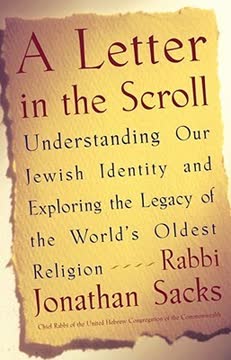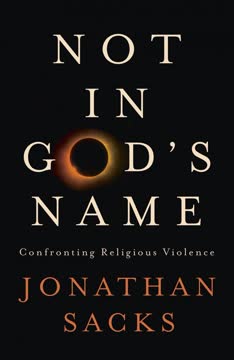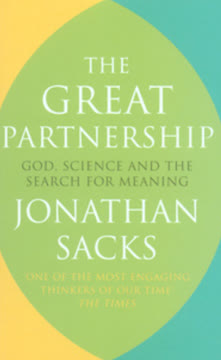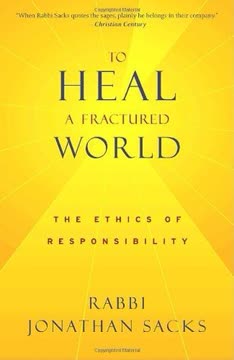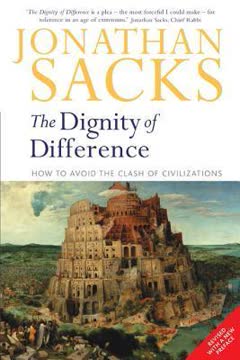Key Takeaways
1. Jewish Identity: A Covenantal Obligation Across Generations
To be a Jew is to be a link in the chain of the generations.
Inherited faith. Judaism is fundamentally a religion of continuity, relying on each generation's commitment to pass on its faith and way of life. Being Jewish means inheriting a faith from ancestors, living it, and handing it down to future generations, forming a link in an unbroken chain. This intergenerational connection is crucial for the survival and vitality of Judaism.
Breaking chains. There are times when this chain weakens, and the continuity of Judaism can no longer be taken for granted. In such moments, questions about identity and purpose become unavoidable. These questions prompt a re-evaluation of the Jewish story and the reasons why ancestors were so determined to continue it.
Personal choice. While one cannot force their children to be Jewish, they can show them the beauty of their beliefs and way of life. By demonstrating a deep love for Judaism, parents can inspire their children to embrace their heritage and continue the journey. Ultimately, the decision to remain Jewish is a personal one, but it is one that is enriched by an understanding of the past and a vision for the future.
2. The Palace in Flames: Judaism's Call to Repair a Broken World
Faith is born not in the answer but in the question, not in harmony but in dissonance.
Radical faith. Judaism begins not with a sense of wonder at the world's existence, but with a protest against its imperfections. This "sacred discontent" arises from the contradiction between the order of creation and the chaos created by humanity. It is a call to action, to transform the world into what it ought to be.
Rejecting easy answers. Judaism rejects both the denial of God in the face of evil and the acceptance of evil as part of God's plan. Instead, it embraces the tension between the two, recognizing the reality of both God and evil. This tension fuels the Jewish commitment to tikkun olam, repairing the world.
Partnership with God. God does not simply abandon the world to its fate. Instead, He calls on humanity to join Him in the task of repairing it. This partnership is based on a covenant, a mutual agreement in which God provides guidance and humanity acts to bring about justice, peace, and compassion.
3. The Image of God: Discovering the Dignity of the Individual
So God made man in His own image; in the image of God He created him; male and female He created them.
Revolutionary concept. The idea that all human beings are created in the image of God, not just rulers or elites, was a radical departure from ancient thought. This concept established the sanctity of human life, the dignity of the individual, and the foundation for human rights. It also laid the groundwork for a free and just society.
Rejecting power. Judaism rejects the notion that power is the ultimate reality. Instead, it emphasizes the importance of moral responsibility and the ability to choose between good and evil. This freedom of choice is what distinguishes humans from other creatures and makes them capable of transforming the world.
Social and political implications. The belief in the image of God has profound social and political implications. It relativizes all social structures and paves the way for change. It challenges the idea that some individuals are inherently superior to others and affirms the equal worth of all human beings.
4. Covenantal Morality: Relationships as the Foundation of a Just Society
Relationships lie not in power but in the bond of mutuality made possible by language.
Beyond objective and subjective. Morality is not simply a matter of objective facts or subjective feelings. Instead, it is covenantal, arising from a partnership between humanity and God. This covenant is a mutual obligation, a bond created by a declaration of trust and loyalty.
Redeeming solitude. Covenants redeem the solitude of free agents, creating relationships that honor the freedom and integrity of each individual. They enable people to achieve together what they could not achieve alone, fostering a shared sense of purpose and responsibility.
Marriage as a paradigm. Marriage is the moralization of sex, and the breakdown of marriage is the beginning of the disintegration of society. It is the supreme example of a covenantal relationship, a bond of trust on which all social relationships depend. It is where love becomes law, and law becomes love.
5. Chosenness: Embracing Difference as a Path to Universal Blessing
Through you shall all the families of the earth be blessed.
Beyond tribalism and universalism. Judaism rejects both tribalism, which assumes one god for each nation, and universalism, which insists on one god for all humanity and only one way to serve Him. Instead, it embraces the idea of a universal God who loves diversity and has different ways of relating to different peoples.
Dignity of difference. God sets His image on the only creature for whom difference is a source of identity, namely man. And to exemplify this truth, He chooses Israel, the people who are called on to be different, to show that for God, difference matters.
Love the stranger. The Torah commands us to love the stranger, not because they are like us, but precisely because they are not. This is the greatest religious truth, that God loves the stranger, and that we should too.
6. From Exodus to Sinai: The Birth of a Nation Under Divine Sovereignty
You will be for Me a kingdom of priests and a holy nation.
Beyond freedom. The Exodus was only the prelude to Israel's birth as a nation. The decisive event took place at Mount Sinai, where God offered them the covenant and they accepted. It was then that they discovered that God reveals Himself in the form of laws.
Consent of the governed. The covenant was made not between one king and another but with an entire people. Before stating the terms of the covenant, God told Moses to speak to the people and determine whether or not they agreed to become a nation under the sovereignty of God.
Egalitarian politics. The idea of a kingdom every one of whose citizens is a priest, and a nation every one of whose members is holy, is unprecedented. At Sinai, God reveals Himself equally to everyone. At Israel’s founding moment, every individual is a party to the covenant and none stands higher than any other.
7. The Synagogue: A Portable Homeland and a Beacon of Hope
I have become to them a small sanctuary in the countries where they have gone.
Revolutionary institution. The synagogue was neither temple nor shrine. There were no sacrifices or votive offerings. It could be built anywhere. It was a place made holy by the simple fact that people gathered there to worship God.
Global nation. The synagogue freed Jewish spirituality from its dependence on a land, a country, a state, a holy city and a Temple with its sacrificial rites. It turned Jews from a people defined by territory into that rarest of phenomena, a global nation.
Communal center. The synagogue was also a communal center in the broadest sense, home of Jewry’s tzedek and hessed activities, a courtroom and welfare institution combined. It became the place where communal announcements were made, lawsuits were heard, and charitable funds deposited and distributed.
8. Teshuvah: Atonement Through Personal Transformation
Happy are you, O Israel. Before whom are you being cleansed and who cleanses you? Your Father who is in heaven.
Direct relationship. Now that there was no Temple and no High Priest, atonement need no longer be vicarious. The sinner could obtain forgiveness directly. All he or she needed to do was confess the sin, express remorse and resolve not to repeat it in the future.
Priestly and prophetic. The idea of teshuvah brought together the priestly and prophetic traditions into a single institution. Following the prophets it needed no sacrifice. Following the priests it was done at regular times, especially on the Day of Atonement itself.
Every Jew a priest. In atonement every Jew became a priest. The sinner could obtain forgiveness directly. All he or she needed to do was confess the sin, express remorse and resolve not to repeat it in the future.
9. The Enduring Power of Education: Knowledge as the Key to Freedom
The Jewish religion, because it was a literature-sustained religion, led to the first efforts to provide elementary education for all children in the community.
Universal literacy. The invention of the alphabet heralded, for the first time in history, the possibility of a universally literate people. No development could have been more revolutionary in extending human horizons.
No elites. The knowledge of God, preserved in texts, would then be accessible to everyone—hence, no elites. In almost every other culture, priesthood meant membership in a literate elite.
Life-long learning. The word Torah means “teaching.” God reveals Himself to mankind not in the storm, the wind, the sun, the rain, but in the voice that teaches, the words that instruct.
10. The Sabbath: A Weekly Oasis of Freedom and Equality
God blessed the seventh day and made it holy.
New institution. The Sabbath was a totally new institution in human history, and at first no one else could understand it. Every religion had its holy days. But none before had ever had a day whose holiness was expressed in the prohibition of work.
Tutorial in liberty. Shabbat is the greatest tutorial in liberty ever devised. Passover tells us how the Israelites won their freedom. Shabbat tells us how they kept it. One day in seven, Jews create a messianic society.
Public time. Shabbat is not simply a vacation, “free time,” time that is mine to dispose of as I wish. It differs from a vacation the way a park differs from a private garden. It is a world that exists only in virtue of it being shared by a community.
11. The Holocaust: Confronting the Silence and Affirming Life
Our enemies wish to make us slaves. But though they control our bodies, they do not own our souls.
Unanswered questions. Where was God at Auschwitz? Sooner or later this was the question I had to ask, because the Holocaust still casts its shadow over Jewish life. The Jewish journey from then to now, from Abraham and Sarah to our time, passes not once but many times through the valley of the shadow of death.
Principled refusal. Jewish faith is the principled refusal to accept either answer, because each would allow us to live at peace with the world, and it is morally impossible to live at peace with a world that contains an Auschwitz.
Living as Jews. If you were to ask what our response to the Holocaust should be, I would say this: Marry and have children, bring new Jewish life into the world, build schools, make communities, have faith in God who had faith in man and make sure that His voice is heard wherever evil threatens.
12. The Jewish Journey: From Ambivalence to Pride
But this is ours.
Conflicted identity. For the past century, perhaps for much longer, a deep ambivalence has cast its shadow over Jewish life. Since the First Crusade, in 1096, Jews had periodically been attacked and murdered for being Jews.
Pride over shame. The only sane response to anti-Semitism is to monitor it, fight it, but never let it affect our idea of who we are. Pride is always a healthier response than shame.
Unique contribution. It is only by being what we uniquely are that we contribute what we alone can give. It is precisely by being different, singular, in-but-not-altogether-of this time and place that Jews have so often been a distinctive voice in the Western story of the spirit and the mind.
Last updated:
FAQ
1. What is A Letter in the Scroll by Jonathan Sacks about?
- Exploration of Jewish Identity: The book is a personal and theological journey into what it means to be Jewish, tracing the historical, spiritual, and cultural evolution of the Jewish people from biblical times to the present.
- Legacy and Survival: Sacks examines how Judaism, as the world’s oldest religion, has survived through crises, persecution, and assimilation, focusing on the covenantal bond that unites generations.
- Judaism as Civilization: The book presents Judaism not just as a religion, but as a civilization and a moral vision that has shaped Western thought and values.
- Response to Modern Challenges: It addresses contemporary issues such as assimilation, ambivalence, and the crisis of Jewish identity, offering insights for renewal and continuity.
2. Why should I read A Letter in the Scroll by Jonathan Sacks?
- Profound Insight into Jewish Continuity: The book offers a deep exploration of Jewish survival, identity, and the reasons for maintaining Jewish life in the modern world.
- Accessible and Comprehensive: Sacks makes complex theological and historical ideas understandable for both Jews and non-Jews, providing a broad perspective on Jewish values and history.
- Universal Relevance: Beyond Judaism, the book addresses fundamental questions about identity, morality, and the human condition, making it valuable for anyone interested in religion, philosophy, or culture.
- Contemporary Application: Sacks provides thoughtful reflections on how Jews today can reconnect with their heritage and face modern challenges with pride and purpose.
3. What are the key takeaways from A Letter in the Scroll by Jonathan Sacks?
- Jewish Identity as Covenant: Jewish identity is both inherited and chosen, rooted in a covenantal relationship with God that obligates each generation to continue the story.
- Education and Freedom: The book highlights the centrality of education and the Sabbath in sustaining Jewish freedom, dignity, and communal life.
- Moral Responsibility: Sacks emphasizes the Jewish mission to repair the world (tikkun olam) through justice, charity, and faithfulness.
- Resilience and Renewal: Despite historical tragedies, Judaism’s ability to adapt and renew itself—especially after the destruction of the Temple and the Holocaust—is a central theme.
4. What are the best quotes from A Letter in the Scroll by Jonathan Sacks and what do they mean?
- “Each of us is a letter in the scroll.” This metaphor highlights the idea that every Jew is a unique and essential part of the ongoing Jewish story, with a responsibility to past and future generations.
- “Why be Jewish?” Sacks frames this as a question of both personal and collective identity, urging readers to consider the meaning and value of their heritage.
- “The covenant is a partnership.” This quote underscores the mutual responsibility between God and the Jewish people, emphasizing freedom, dignity, and moral action.
- “Judaism is the voice of hope in the conversation of humankind.” Sacks expresses the enduring optimism and moral vision that Judaism brings to the world.
5. How does Jonathan Sacks define Jewish identity in A Letter in the Scroll?
- Fate and Faith: Jewish identity is described as both a birthright (fate) and a matter of free commitment (faith), creating a unique tension that must be actively lived and chosen.
- Covenantal Inheritance: Jews are born into a covenant “already forsworn at Sinai,” inheriting obligations and a shared destiny.
- Personal and Collective: Identity is not just individual but collective, binding each person to a historical narrative and moral mission.
- Ongoing Narrative: Sacks uses the metaphor of the “letter in the scroll” to illustrate how each Jew contributes to the unfolding story of the Jewish people.
6. What is the significance of the question “Why be Jewish?” in A Letter in the Scroll by Jonathan Sacks?
- Historical Turning Points: Sacks identifies moments in Jewish history—such as after the destruction of the Temples, the Spanish Expulsion, and the Holocaust—when this question became urgent.
- Modern Relevance: The question is especially pressing today, as many Jews face assimilation and question their connection to Judaism.
- Identity as Choice: Sacks challenges the assumption that Jewish identity is automatic, emphasizing the need for conscious commitment and pride.
- Survival and Continuity: The book argues that answering this question is essential for the survival and renewal of Jewish life.
7. How does A Letter in the Scroll by Jonathan Sacks explain the concept of covenant?
- Moral Partnership: The covenant is a binding moral pact between God and the Jewish people, based on mutual responsibility, freedom, and dignity.
- Foundation of Society: It shapes Jewish social institutions—family, community, and nationhood—serving as a model for justice, equality, and shared values.
- Living Dialogue: The covenant is dynamic, requiring each generation to engage with its principles through study, worship, and ethical action.
- Marriage as Metaphor: Sacks likens the covenant to marriage, emphasizing faithfulness, loyalty, and love as the basis for social and religious life.
8. What is the metaphor of the “letter in the scroll” in A Letter in the Scroll by Jonathan Sacks?
- Every Jew as a Letter: Drawing on the Baal Shem Tov, Sacks describes the Jewish people as a living Torah scroll, with each Jew as a unique letter.
- Continuity and Responsibility: Each individual’s life is a chapter in an ongoing story, linking past, present, and future generations.
- Collective Identity: The metaphor emphasizes that Jewish identity is not just personal but part of a larger, historical narrative.
- Moral Mission: Being a “letter” means having a responsibility to uphold and transmit the values and legacy of Judaism.
9. How does A Letter in the Scroll by Jonathan Sacks describe the role of education in Jewish life?
- Central to the Covenant: Education is the essential institution of Jewish life, with Abraham chosen for his role as a teacher.
- Universal Literacy: The development of the alphabet and universal literacy allowed every Jew to access knowledge, overturning ancient hierarchies.
- Transmission of Values: Schools, synagogues, and yeshivot became the means by which Jewish law and identity were passed down, making study a religious and political act.
- Sustaining Freedom: Education is seen as the foundation of a free society, where individuals internalize the law and become its masters.
10. What is the significance of the Sabbath (Shabbat) in A Letter in the Scroll by Jonathan Sacks?
- Revolutionary Institution: The Sabbath sanctifies time, creating a weekly “messianic society” where freedom and equality are experienced by all.
- Suspension of Hierarchies: On Shabbat, all social distinctions are set aside, allowing master and servant alike to rest and experience dignity.
- Spiritual and Social Renewal: The Sabbath renews family and community bonds, offering a vision of a just and peaceful world.
- Public Time: Shabbat is communal and cannot be bought, emphasizing the importance of shared rest and spiritual reflection.
11. How does A Letter in the Scroll by Jonathan Sacks address the challenges to Jewish identity in the modern era?
- Ambivalence and Assimilation: Sacks highlights the crisis of ambivalence among modern Jews, leading to high rates of intermarriage and secularization.
- Impact of Anti-Semitism: Historical persecution has caused some Jews to feel embarrassed or to minimize their Jewishness in pursuit of acceptance.
- Need for Pride: Sacks calls for renewed pride in Jewish identity, arguing that ambivalence cannot sustain a people.
- Embracing Heritage: The book urges Jews to fully embrace their heritage as essential for survival and continuity.
12. How does A Letter in the Scroll by Jonathan Sacks explain the Jewish response to suffering, evil, and the Holocaust?
- Faith Amid Suffering: Sacks acknowledges the profound challenge the Holocaust poses to faith, refusing easy answers to the problem of evil.
- God’s Silence and Human Responsibility: The book suggests that God’s non-intervention is consistent with human free will, placing responsibility on humans to combat injustice.
- Endurance and Hope: Jewish faith is characterized by courage, endurance, and the determination to continue life and ideals in defiance of evil.
- Spiritual Renewal: Moments of tragedy have often led to spiritual renewal and the redefinition of Jewish life, as seen after the destruction of the Temple and the Holocaust.
Review Summary
A Letter in the Scroll receives high praise for its exploration of Jewish identity and philosophy. Readers appreciate Sacks' eloquent writing, accessible explanations, and thought-provoking insights. Many find it inspirational, reaffirming their Jewish pride. Critics note some repetition and question certain arguments. The book is lauded for addressing why one should be Jewish, the contributions of Judaism to the world, and the challenges faced by modern Jews. It's recommended for both Jewish and non-Jewish readers seeking to understand Judaism's enduring significance.
Similar Books
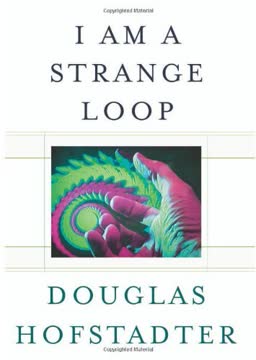
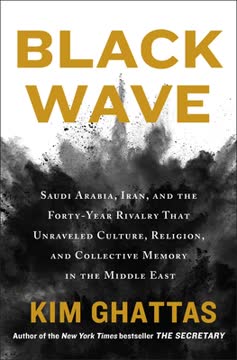
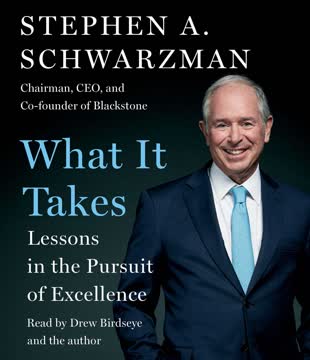
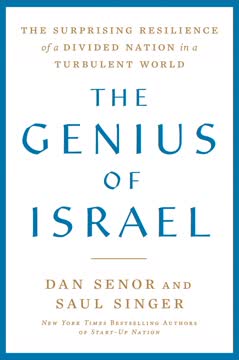
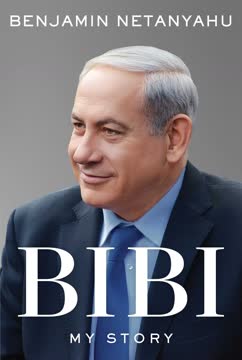
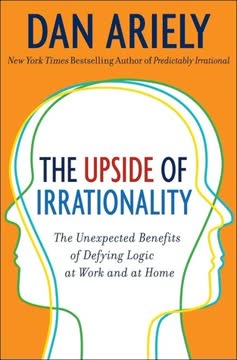
Download PDF
Download EPUB
.epub digital book format is ideal for reading ebooks on phones, tablets, and e-readers.
